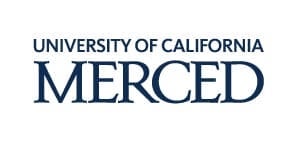University Lab Acetone Recycling & Waste Disposal
Chemistry Lab Sees a Drastic Reduction in Acetone Waste Solvent Recycling & Waste Solvent Disposal Costs

CBG Biotech’s 2.5G Benchtop Supreme solvent recovery system is making an important difference in the undergraduate chemistry lab at Yale University—and it's not difficult to understand why.
In early 2008, Yale took advantage of a trial program that was being offered by CBG to see what benefits they could expect from a solvent recovery system. Since then, the CBG solvent recovery system has recycled 100% of the considerable volume of acetone being used in this lab.
Chemistry Senior Lecturer Christine DiMeglio has, on average, between 250–300 undergraduate students learning concurrently in her chemistry labs—all using glassware that subsequently needs to be cleaned with acetone by chemistry department lab management and student workers.
Solvent recovery has reduced the amount of acetone Yale's chemistry department purchases by 90%, resulting in immediate cost savings.
$3,000 Saved in Hazardous Waste Fees in Six Months
After six months of recycling acetone, the chemistry lab:
- Recovered 65 gallons of acetone
- Diverted 500 pounds of solvent waste
- Saved the campus $3,000 in hazardous waste fees
At that rate, the solvent distillation unit paid for itself in about two years—but that proved to be just the beginning.
UC Merced Staffers See the Benefits of Acetone Recycling
Prior to CBG's waste solvent recycling solution, the chemistry lab was accumulating containers of acetone waste and storing them in a separate facility on campus. This practice not only wasted solvent but also amplified the potential of a solvent-related hazard occurring—the more dangerous chemical waste being moved throughout a facility, the greater the chance of lab or university personnel coming into contact with it.
Additionally, the process wasted more than solvent. It wasted staff hours and there was additional money being used on third-party waste solvent disposal. Lab personnel spent a good deal of time disposing of the solvent and moving it to another onsite location, and the university had to pay third-party waste solvent disposal fees to haul it off the premises.
Once equipped with an acetone recycling machine, the chemistry lab made a 20-liter jug of acetone last through four or five uses—which immediately reduced solvent waste and the additional fees associated with waste solvent disposal by 400 to 500%.
Hein explained that each time he runs solvent through his lab's acetone recycler, about 80% comes back ready for further use. “In the end, it is just like aluminum recycling,” Hein said. “Losses due to processing mean it is not an infinite game, but we get a lot more use out of the same material without just throwing it into the landfill.”
UC Merced staff quickly started taking notice.
“I’m very excited about this project," said Dean Juan Meza of the School of Natural Sciences. “This is a perfect example of our faculty’s entrepreneurial and innovative spirit. It serves as a model for our campus’s commitment to sustainability.”
A Campuswide Sustainability Initiative Takes Root
As a result of the sustainability and savings realized by Hein's lab, UC Merced laboratory officials starting to think about making acetone recycling and waste disposal a campuswide initiative.
“We hope to make this common practice rather than the exception at UC Merced,” Vice Chancellor for Research Sam Traina said. “Not only does this allow us to contain our research cost and advance our sustainability agenda, but it's also an excellent example to our graduate student researchers on the practical use of ‘best practices’ in the research lab. This will serve them well when they leave UC Merced and set up research labs or chemical businesses of their own."
Hein said that’s precisely what he was hoping would happen. “It could become a campuswide initiative because, as research ramps up, chemical use and disposal could get very expensive,” he explained. "It’s a good chance to start a long-term sustainable practice that will also save the campus a lot of money."
Hein said acetone recycling has made washing and reusing even the smallest glass vials more cost-effective (compared to tossing them out after each use). “The program will save the researchers money by reducing the quantity of solvent purchased, and it will save the campus’s Office of Environmental Health & Safety money through reduced chemical disposal,” said EH&S Specialist Karen Smith.
Currently, the university is considered a small-quantity waste generator and is only required to remove hazardous waste off campus twice a year. Each shipment costs approximately $11,000 because the university has to pay $7 to $10 per pound of waste it ships out.
If UC Merced became a large-quantity waste generator, Smith explained, it would be required to remove waste four times per year. The recycling program will allow the campus to maintain its current small-quantity waste generator status and keep the environment that much cleaner.
Other universities are also paying attention to UC Merced's success story. The program has already attracted the interest of the Berkeley Center for Green Chemistry. "We’d have to develop protocols and train people,” Hein said, “but I’m hoping we can put together a package of information so other campuses can implement this, too.”

